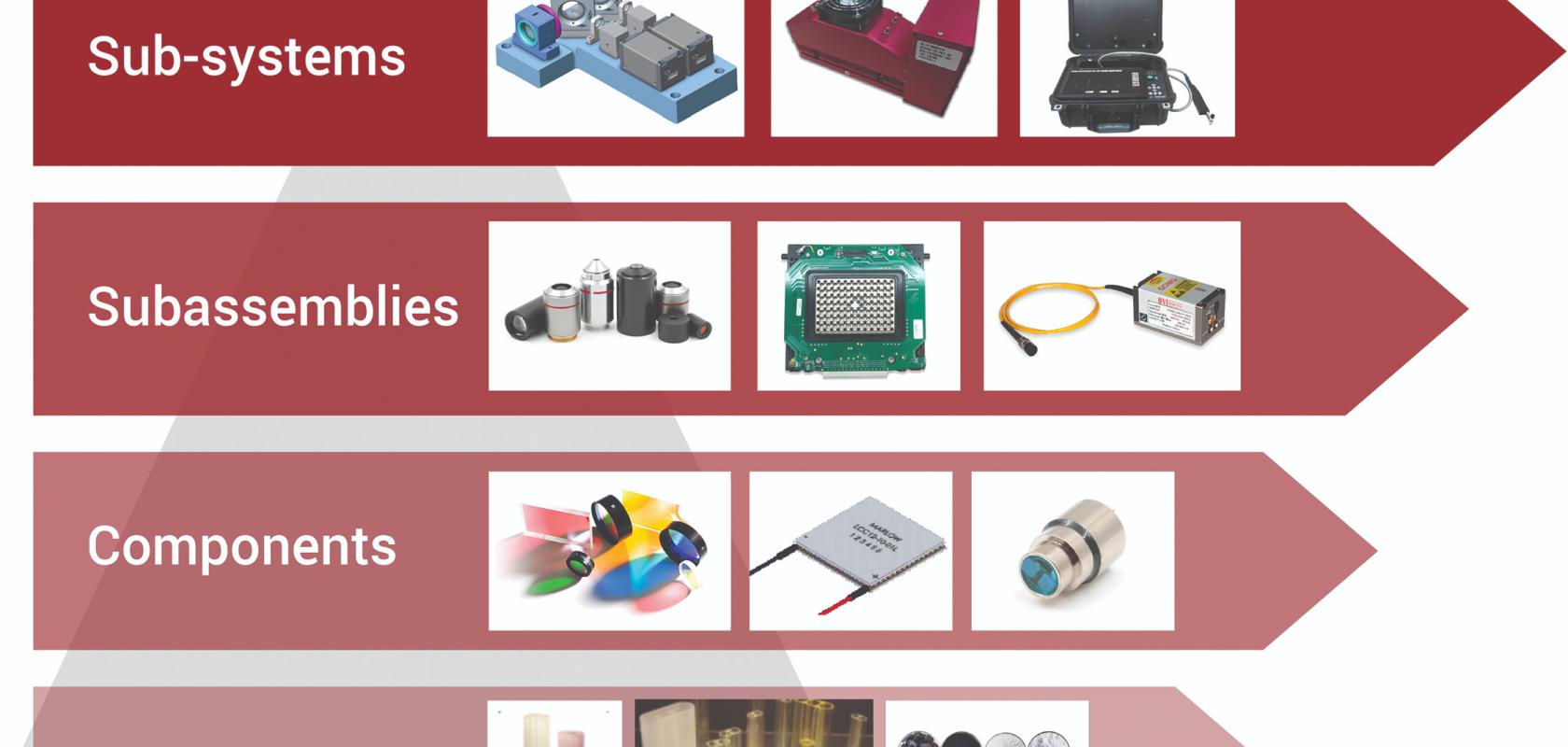Keely Portway finds out how advances in optical components and subsystems are helping instrumentation vendors provide a wider range of solutions for the smart healthcare revolution
It’s no surprise that the global population is ageing. The World Health Organisation (WHO) has been predicting that the proportion of people over the age of 60 will increase significantly in the coming decades. By 2050, the WHO says that the global number of people aged 60 years and older will double, reaching 2.1 billion, while the number of people aged 80 and older will triple, reaching 426 million.
With age can come the risk of a variety of health conditions and other chronic diseases, and of course, we cannot mention diseases without referencing the current global situation. Yes, while healthcare professionals, biologists, academics and specialists in instrumentation technology have long sought solutions to ensure smarter healthcare is available, the pandemic has only served to push these developments firmly to the fore.
Fast pace
The photonics industry has always been fast-moving, but the pace at which companies and organisations came together from the start of the pandemic to find technological solutions was astounding. As an example, in the summer of 2020, only a few months after the worldwide outbreak of Covid-19, a group of researchers from the University of York in the UK announced that they were developing laser-based handheld biosensors with the potential to deliver fast, real-time blood test results for patients such as those suffering from Covid-19 and with secondary infections such as pneumonia.
The technology is based on laser interferometry to detect proteins such as procalcitonin, whose level increases in blood when a patient has a bacterial infection. The first patient trials are expected to take place in 2022 and the researchers aim for this to be a tool that can help general practitioners in their decision-making. For example, in many patients who present symptoms of infections, it can be difficult for doctors to decide whether symptoms are caused by a viral or bacterial infection. This knowledge is crucial to reduce the unnecessary prescription of antibiotics and the spread of antimicrobial resistance.
More recently, engineers at The University of Texas in Austin trialled a portable disease diagnosis platform described as a ‘lab-on-a-chip.’ The findings, which were published in Applied Physics Reviews, demonstrated that the platform was able to detect tiny amounts of virus in a sample, with a single chip able to efficiently test dozens or even hundreds of patients. The lab-on-a-chip biosensing system has the ability to detect the biomarker at a much earlier stage, which increases detection capabilities. In addition, the chip itself has porous photonic crystal waveguides that encourage strong interactions between light and biomarkers.
But while the pandemic brought such important and exciting work to the forefront, it was also largely responsible for many of the supply chain issues that are still causing problems for the industry today. For those research teams, SMEs and instrumentation vendors, this means that it is more important than ever to strategically source the right components and subsystems to support the development of life sciences instrumentation, whether that be in the biotechnology, medical or scientific sector of the industry.
Increased demand
These three segments are how II-VI specifically breaks down the life sciences instrumentation market – and the demand is something that Kim Netzeband Phd, director, life sciences marketing at II-VI Incorporated, has seen first-hand. ‘We’ve seen a huge increase in optical and thermal product demand over the past couple of years,’ she revealed. ‘I think Covid alerted the market to how important instrumentation really is, but it expands to all other areas of life sciences research. There are also other market trends that are impacting the life sciences as well. For example, genome sequencing was in its infancy 50 years ago, but technology advances and innovation are driving awareness and next generation platform development. Now we’re able to sequence quickly and accurately, manage massive amounts of data, link to cell phones, and even access telehealth. Life sciences market growth is outpacing historical trends.’
In terms of the challenges that the instrumentation vendors are facing, Netzeband recognises that many have been affected by the supply chain delays and also by more specific issues. ‘I would say, across the board, there have been supply challenges over the past couple of years. There are also particular challenges within each life sciences segment as we define it – biotechnology, medical and scientific.’
The applications are also very diverse among these segments, and the solutions often need to be tailored accordingly, Netzeband continued: ‘Within biotechnology, manufacturers are often trying to make more technologically advanced equipment to support higher process and measurement throughput, while simultaneously reducing the operating complexity in such a way that non-scientists can easily run these platforms. Then, on the medical side, it’s a little bit different. Designers are often trying to develop platform improvements that might be more efficient or less invasive at the patient level. Scientific, of course, is really targeting smaller, more field-deployable, rugged instrumentation that can easily be used in different environments and geographies.’
Perfect partner
In the current climate, it is also vital that life sciences instrumentation vendors are able to decrease time to market, reduce costs and improve tool performance by incorporating modular design strategies, innovative hardware technologies and integration, design for manufacturability, and better software configurability. In order to meet all these goals, they need the right partner.
‘Having a vertically integrated partner, like II-VI, that manufactures globally and that can deliver the right solution at all the levels of the value chain, from materials and components, to subassemblies and subsystems, really offers value,’ said Netzeband. ‘It allows instrumentation manufacturers to either integrate components and subassemblies themselves, or to create partnerships to design and receive more complex and higher-level subsystems. This vertically integrated level of support offers design and innovation flexibility, as well as optimised design-for-manufacturability, improving overall performance and cost-reduction efforts. Finally, having a global manufacturing footprint offers reassurances that, as political and economic impacts come along, we’re able to pivot as needed to support our customers.’
The right technology is also essential for life sciences instrumentation vendors, and advances in components and subsystems over the years have helped to advance many of the new applications in smart healthcare. ‘It truly is such a fast-growing market in terms of technologies, and in many cases, it is all about optimising light and thermal management around the samples to drive measurement improvements,’ said Netzeband.
‘For example, if you can design and manufacture optical components that help improve instrument performance, this can often translate into faster, more sensitive and even more accurate measurements. One small piece of glass with a highly complex coating can have an amazing impact! For example, high-precision optical and thermal components are critical for fast and accurate measurement results in PCRbased Covid testing platforms.
In addition, manufacturing and detection technologies are quickly evolving from what was available a decade ago. Netzeband said: ‘At II-VI, we often partner with instrumentation manufacturers to create custom solutions for next-generation platforms, even supporting subassembly and subsystem level solutions. We offer a diversified product and application portfolio that enables life science instrumentation manufacturers to innovate while achieving their cost and performance objectives. Overall, instrumentation manufacturers benefit from our expertise and broad product portfolio in optics and thermoelectrics, to deliver solutions from materials and components, to subassemblies and subsystems.
References
References www.who.int/health-topics/ ageing#tab=tab_1?
Fast, accurate, point-of-care COVID-19 pandemic diagnosis enabled through advanced lab-on-chip optical biosensors: Opportunities and challenges Applied Physics Reviews 8, 031313 (2021); https:// doi.org/10.1063/5.0022211
Find out more about how life sciences instrumentation will be critical for the predicted health care transformation by downloading this white paper. It defines the life sciences instrumentation market segments and how instrumentation manufacturers can benefit from II-VI’s expertise to deliver solutions from materials and components, to subassemblies and subsystems.


